Gilding Goshuin
Offering: 2,000 yen
This is a handmade Goshuin with metal leaf pressed onto hand-made Japanese paper.
2025/11/19
令和7年紅葉情報【11月19日現在見頃です。勤労感謝の日あたりがピーク予想です】
2025/08/10
TikTok・instagram・Facebookアカウントは閉設いたしました。
2025/04/12
境内の桜が満開です、下呂温泉にお越しの際はぜひお寄りください
Gyokuryu-ji Temple, an ancient Zen temple located in Gero City, Gifu Prefecture, was founded approximately 1300 years ago during the Nara period by the Buddhist monk Gyoki. Legend has it that Gyoki, while traveling through various provinces, felt this place to be sacred and enshrined Yakushi Nyorai (the Medicine Buddha) here. Since then, it has gathered the faith of people as a sacred site with miraculous virtues.
During the Kamakura period, Buddhist statues of renowned high priests of Japan were brought to the temple, including a Kannon (Goddess of Mercy) statue created by Jikaku Daishi in Kamakura and a Shaka Nyorai (Sakyamuni Buddha) statue created by Eshin Sozu from Mount Hiei in Kyoto. Both of these statues were created over 1000 years ago.
In the Muromachi period, Kanamori Nagachika, the lord of Hida Province, granted temple lands to Gyokuryu-ji. After Nagachika's death, the temple's name was changed to Yochuzan Gyokuryu-ji, taking its name from his posthumous Buddhist name. The current temple buildings were reconstructed in 1761 (the 11th year of the Horeki era).

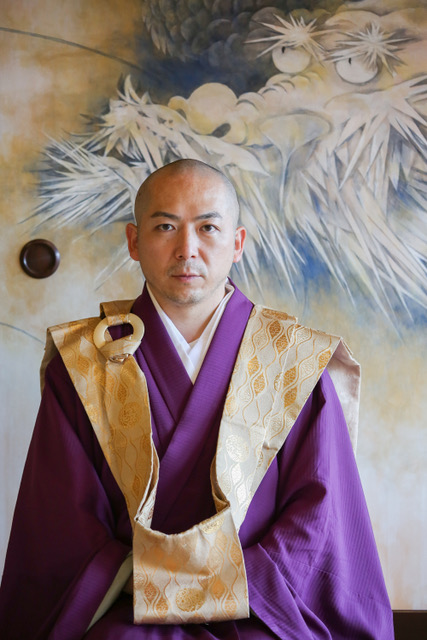
SASAKI Houkaku is the present abbot of Gyokuryuji. He was born in 1979 in Gero City, Gifu Prefecture.
He was ordained at Gyokuryuji and attended Hanazono University in Kyoto, (the sole Rinzai-affiliated university in the world). While attending university, he lived and trained under Masuda Soryu Roshi at Ryosen-an, one of the four main sub temples of the Myoshinji school of Zen.
After graduation, he became an unsui at Shogenji monastery, known as one of the strictest training monasteries in Japan. There he trained under Yamakawa Sogen Roshi, and even served as the head monk of the monastery for several years.
In 2009, he was invited to attend the 11th East-West Spiritual Exchange and spent a month living with Catholic monks at Liguge Abbey in Poitier, France.
In 2011 he left the monastery and in order to expand his life experiences lived in Europe for three years.
In 2020, he was asked by his ordination priest to take over Gyokuryuji and was installed as its 19th head priest. As abbot he hopes the temple can offer people a hint of how to live genuinely in this modern world.
What is Zen? Zen refers to a spiritual tradition which dates back to India and the historical Buddha Shakyamuni. The Japanese term Zen comes from the Chinese word Chan 禪, which itself comes from the Sanskrit dhyana, meaning “meditation.” It is often called the Buddha Mind school busshinshu 佛心宗, because it emphasizes direct experience over doctrinal study. In Zen, rather than read and study about Buddha's awakening, one is expected to meditate and experience it on one's own. The tradition asserts that beginning with the historical Buddha, this awakened mind has been transmitted directly from teacher to student like “water poured from one container to the next” from India to China, from China to Japan, and now from Japan to America.
Bodhidharma (d. 528?) is considered the first patriarch of Zen and is responsible for bringing it from India to China. After its arrival in China, Zen underwent further developments and branched out into 5 major schools each with its own style. Two of these schools, Soto曹洞 and Rinzai 臨濟, were transmitted to Japan and remain active to this day. Rinzai-ji is one of the first branches of the Rinzai school in North America.
The Rinzai school is named after its founder, the Chinese teacher Rinzai Gigen 臨濟義玄 (d. 866), whose dynamic teaching style was often marked with vigorous shouts and demands from students to realize their own awakened mind directly:
“If you want to be free to live or to die, to go or to stay as you would put on or take off clothes, then right now recognize the one listening to my discourse, the one who has no form, no characteristics, no root, no source, no dwelling place, and yet is bright and vigorous !” (Sasaki and Kirchner, p.198)
Rinzai's aggressive style of teaching may come to a surprise to people who equate Zen with a state of peace and calmness, but in practice Zen does not stop at stillness, “Although profoundly still … (the Zen mind ) is not a state of passivity, unconsciousness, or trance. The stillness… is vibrant and dynamic, arising from a mind that is completely clear, aware, and open.” (zen.rinnou.net, 2020)
With the introduction of Rinzai Zen to Japan, the school went through further changes and developments and from around 150 years ago specialized training monasteries sennmon dojo 専門道場 were formed to maintain the vitality of the teachings.
Here at Gyokuryu-ji we offer a daily practice informed by the Japanese Rinzai Zen tradition but suited to the modern person. We do our best to keep the teachings vibrant for people of all backgrounds and ages and try to actualize Rinzai's teaching to “turn our lights inward, not seek elsewhere and know that our body and mind is no different than the Buddha and Patriarchs 自回光照、更不別求 知身心興祖佛不別
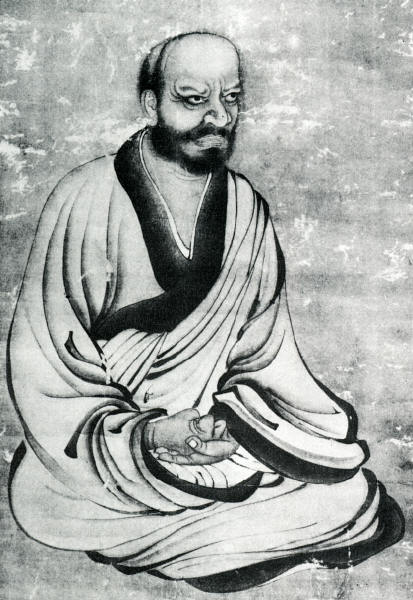
Kirchner, Thomas Yuho ed. The Record of Linji. Translated and with commentary by Ruth Fuller Sasaki. Honolulu: University of Hawaiʻi Press, 2009.
“Zazen”. The Official Site of the Joint Council for Japanese Rinzai and Obaku. Zen retrieved March 25, 2020, http://zen.rinnou.net/zazen/index.html
Visiting Hours
9:00 AM - 4:00 PM
*Please note that viewing is not possible during religious services. Please inquire for details.
Admission Fee
500 yen
Free for those receiving a Goshuin (temple stamp)
Parking
20 spaces
Tour buses can go up to the bottom of the stone steps (there are 90 stone steps to the temple gate)
Sacred water is available for you to draw freely (please bring your own container)

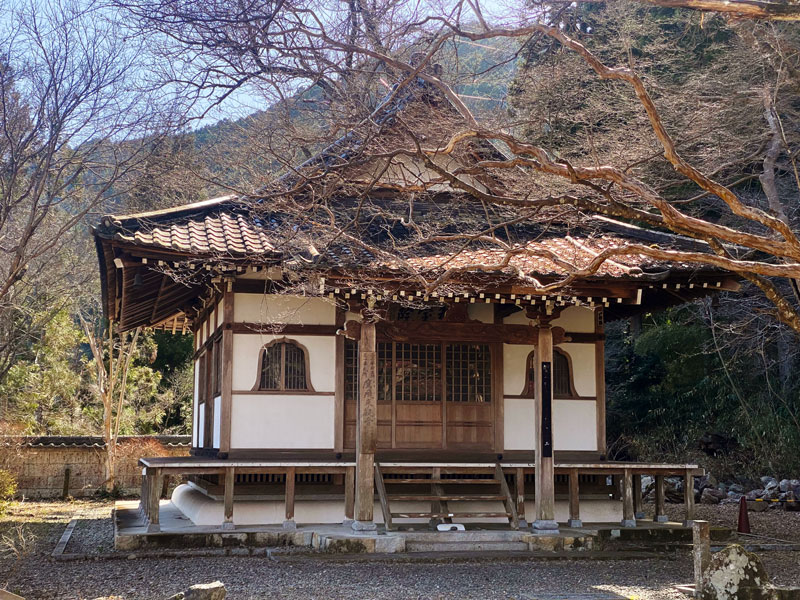
This is the first temple on the Masuda Saigoku Pilgrimage. It enshrines the Takitatsu Kannon (Kannon Riding a Flying Hawk) on a white hawk and 1250 small Buddha statues containing the prayer slips of donors within them.
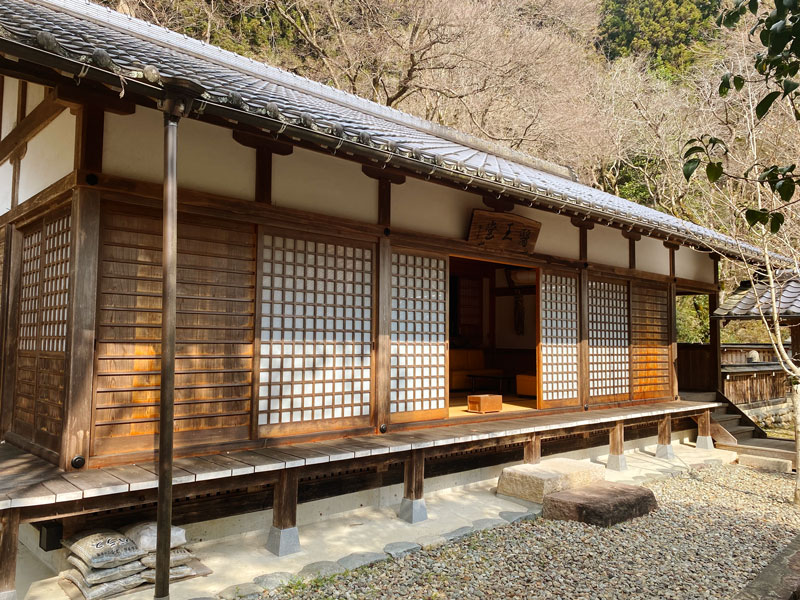
This hall enshrines the Yakushi Nyorai statue created by Gyoki. Prayer services for recovery from illness, memorial services for miscarried or stillborn children, and sutra copying are conducted here.

Legend says that this pond sprang forth in response to prayers for rain in ancient times. The water never dries up, and the rice harvest increased, leading it to be called Masu-ike (increasing pond). It is also believed to have miraculous effects on chronic illnesses.
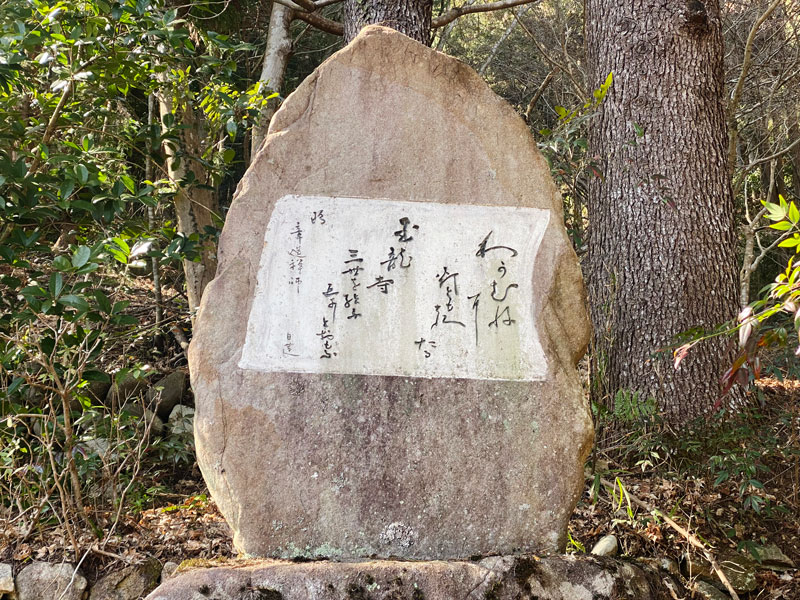
This is a monument inscribed with a poem composed by Byakuren Yanagihara, one of the three most beautiful women of the Taisho era, during her stay here. The poem reads: "In my heart, a light is lit at Gyokuryu-ji, I believe this is a karmic connection spanning three lifetimes." The room where she stayed remains as it was at that time.
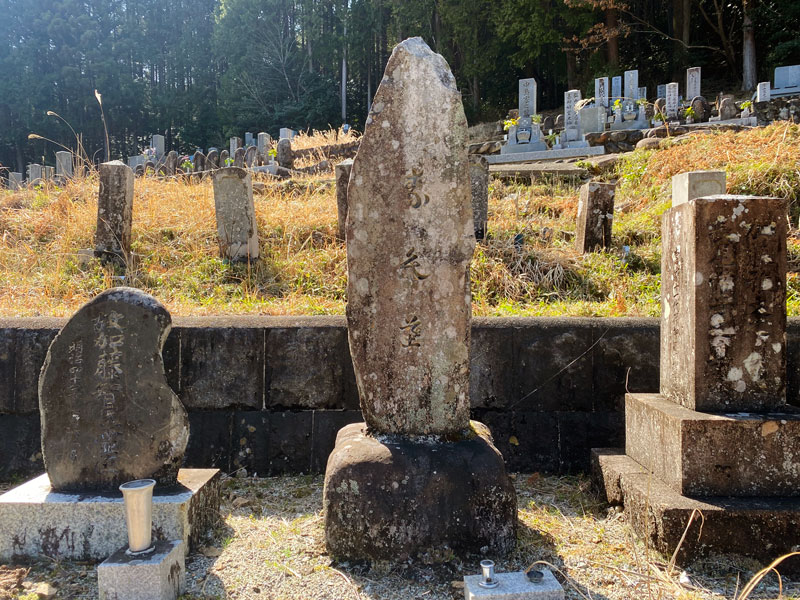
This is the grave of Somo Kato, a haiku poet who was the first Japanese person to travel around the world at the end of the Edo period. He boarded the American black ship USS Powhatan as a cook for the Japanese embassy to the United States. From San Francisco, he traveled around the world on a different route from the embassy and returned to Japan. It has become a sacred place for adventurers.
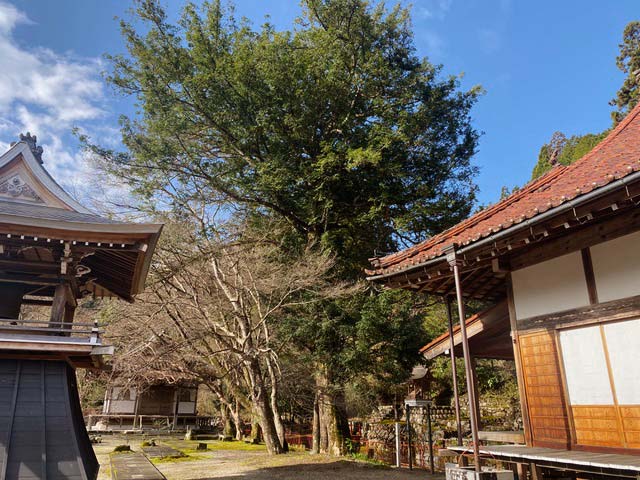
Kaya nut trees were used for carving Buddhist statues and for ships, and its close grain oil was valued as the highest quality vegetable oil. Kaya nut is used as a New Year's good luck charm, and is made into a sugar-coated candy.
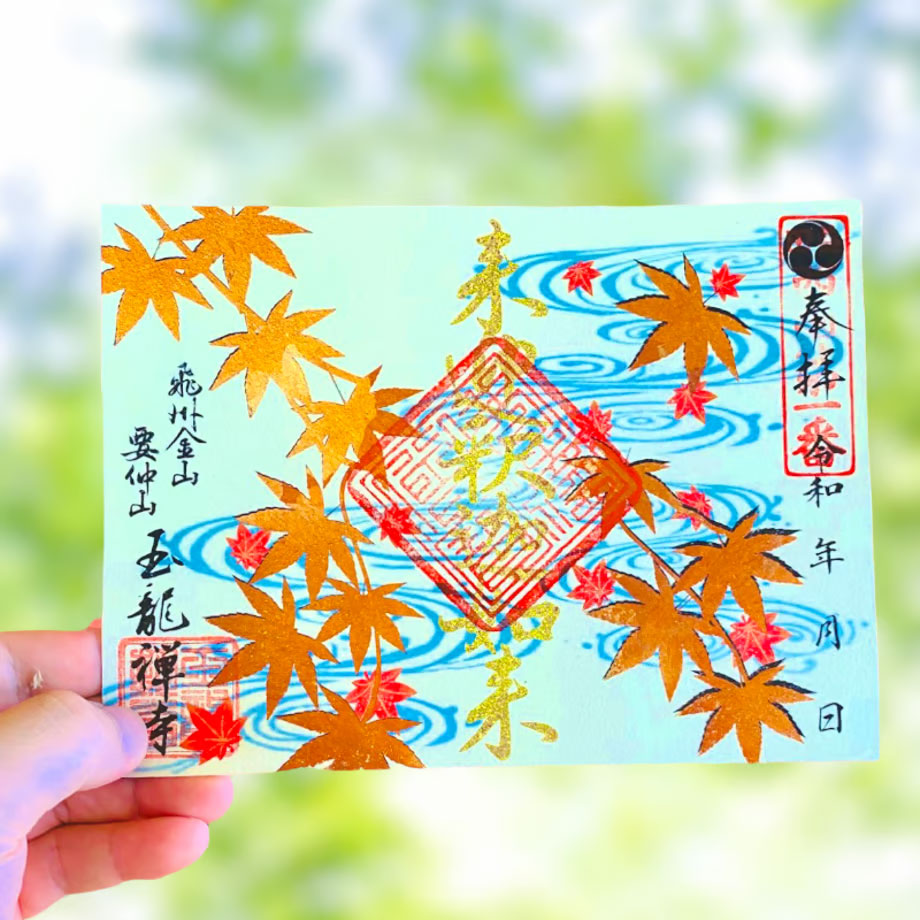
Offering: 2,000 yen
This is a handmade Goshuin with metal leaf pressed onto hand-made Japanese paper.

Offering: 2,000 yen
This Golden Dragon Goshuin was designed by Eiichi Shiotani.
Address
1545 Kanayama-cho, Gero City, Gifu Prefecture 509-1611
Phone
0576-32-2361
FAX
0576-32-4325
Please feel free to contact us.